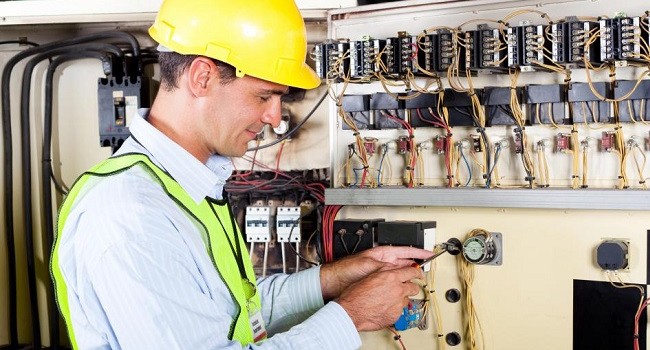A Breakdown of Electrical Circuits and How they Produce Electricity
When getting to know your electrical circuits it’s important to know that everything is made up of atoms. Each one of them has three particles: protons, neutrons and electrons. Electrons spin around the center of an atom and contain a negative charge. Protons, which are in the center of atoms, contain a positive charge. Normally, an atom has as many protons as it has electrons and it is stable or balanced. Scientists can make electrons travel from one atom to another. An atom that loses electrons is positively charged, an atom that gets more electrons is negatively charged. Electricity is created when electrons move between atoms. Positive atoms look for free negative electrons and attract them, so that they can be balanced.
When electrons move through a conductor an electric current is created. A current that always flows in one direction is called a direct current (DC). A battery for example, produces a direct current. A current that flows back and forth is called an alternating current (AC). Electrons cannot jump freely through the air to a positively charged atom. They need a circuit to move. When a source of energy, like a battery, is connected to a light bulb the electrons can move from the battery to the light bulb and back again. We call this an electrical circuit.
Sometimes there are many electrical circuits in a device that make it work. A TV set or a computer may have millions of parts that are connected to each other in different ways. You can stop the current from flowing by putting a switch into the circuit. You can open the circuit and stop electrons from moving. A piece of metal or wire can also be used to produce heat. When an electrical current passes through such metal it can be slowed down by resistance. This causes friction and makes the wires hot. That’s why you can toast your bread in a toaster or dry your hair with warm air from a hairdryer. In some cases wires can become too hot if too many electrons flow through them. Special switches, called fuses, protect the wiring.
Everything we do is somehow affected by electricity and our dependency on wires and circuits is only growing. With this growing need for electricity and power comes the need for more skilled, qualified, and experienced electricians. This kind of knowledge can be applied into hands on training provided by Lamson Institute. Lamson’s Electrical Technician Program has been providing San Antonio students with an in-depth education that will not only teach students about electrical circuits but of everything revolving around electricity. Call us today to see where we can take you.

